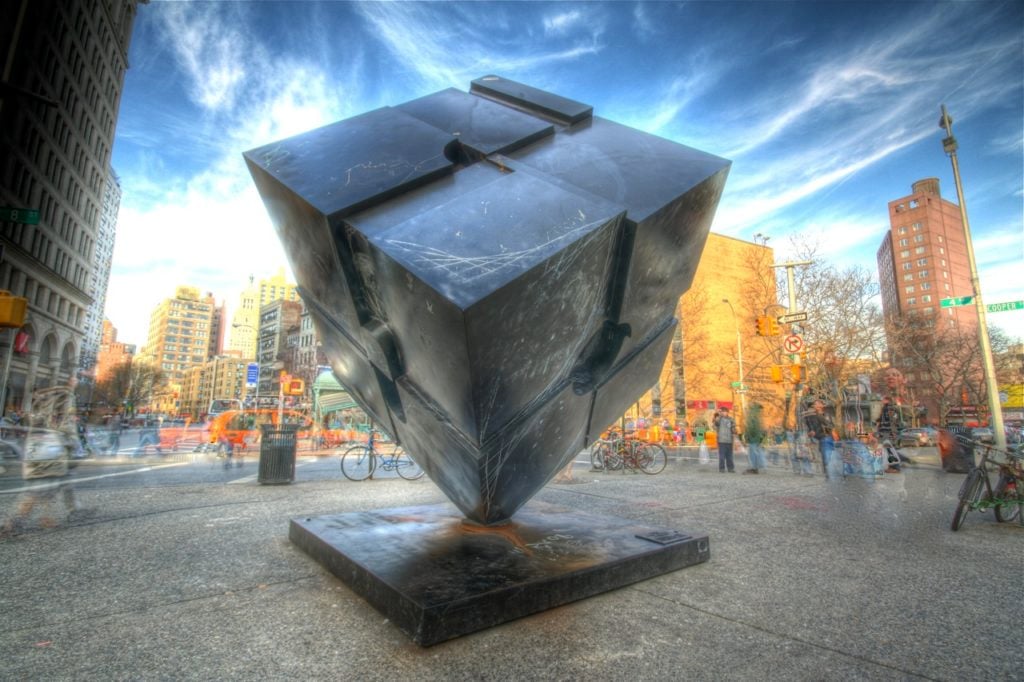Art World
Why Is Beloved Astor Place Cube Sculpture Being Removed?


It’s your last opportunity, for some time, to see, or spin, the Alamo at Astor Place. The Astor Place Cube, or the Cube, as the bronze sculpture by Bernard Rosenthal—characteristically mounted on its corner—is also known, has been at the Astor place traffic island since it was first erected there in 1967. But it has been boarded up in plywood, per Bedford + Bowery, as part of the Astor Place Reconstruction Project, a plan to create pedestrian plazas around Astor Place and Cooper Square. Workers on the site didn’t know how long the Cube would be boarded up.
But it’s only being boxed up temporarily, as per Gothamist, which reported that the plywood was only a protective measure and that the sculpture would be “removed off-site for restoration.”
This wouldn’t be the first time the Cube’s removal was planned. When it was first installed, as part of the “Sculpture in the Environment,” a temporary exhibition of public art organized by special assistant for cultural affairs Doris Freedman, it was only intended to be up for six months. But local residents who loved the Cube, which can be spun on its vertical axis, petitioned for it to remain a permanent fixture.
This also isn’t the first time the Cube has been covered. In October 2011, it was yarn-bombed by artist Olek (Agata Oleksiak) and in 2011, Caltech students gave it a fitted cloth cover so that it looked more like the cube in the video game Portal. The “documentary” about the artist who converted the Cube into a tiny apartment that went viral last year, however, is a hoax.